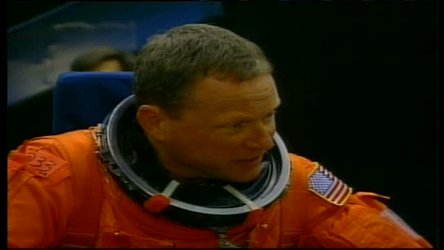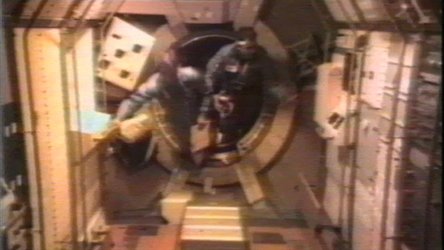Accept all cookies Accept only essential cookies See our Cookie Notice

About ESA
The European Space Agency (ESA) is Europe’s gateway to space. Its mission is to shape the development of Europe’s space capability and ensure that investment in space continues to deliver benefits to the citizens of Europe and the world.
Highlights
ESA - United space in Europe
This is ESA ESA facts Member States & Cooperating States Funding Director General Top management For Member State Delegations European vision European Space Policy ESA & EU Space Councils Responsibility & Sustainability Annual Report Calendar of meetings Corporate newsEstablishments & sites
ESA Headquarters ESA ESTEC ESA ESOC ESA ESRIN ESA EAC ESA ESAC Europe's Spaceport ESA ESEC ESA ECSAT Brussels Office Washington OfficeWorking with ESA
Business with ESA ESA Commercialisation Gateway Law at ESA Careers Cyber resilience at ESA IT at ESA Newsroom Partnerships Merchandising Licence Education Open Space Innovation Platform Integrity and Reporting Administrative Tribunal Health and SafetyMore about ESA
History ESA Historical Archives Exhibitions Publications Art & Culture ESA Merchandise Kids Diversity ESA Brand Centre ESA ChampionsLatest
Space in Member States
Find out more about space activities in our 23 Member States, and understand how ESA works together with their national agencies, institutions and organisations.
Science & Exploration
Exploring our Solar System and unlocking the secrets of the Universe
Go to topicAstronauts
Missions
Juice Euclid Webb Solar Orbiter BepiColombo Gaia ExoMars Cheops Exoplanet missions More missionsActivities
International Space Station Orion service module Gateway Concordia Caves & Pangaea BenefitsLatest
Space Safety
Protecting life and infrastructure on Earth and in orbit
Go to topicAsteroids
Asteroids and Planetary Defence Asteroid danger explained Flyeye telescope: asteroid detection Hera mission: asteroid deflection Near-Earth Object Coordination CentreSpace junk
About space debris Space debris by the numbers Space Environment Report In space refuelling, refurbishing and removingSafety from space
Clean Space ecodesign Zero Debris Technologies Space for Earth Supporting Sustainable DevelopmentLatest
Applications
Using space to benefit citizens and meet future challenges on Earth
Go to topicObserving the Earth
Observing the Earth Future EO Copernicus Meteorology Space for our climate Satellite missionsCommercialisation
ESA Commercialisation Gateway Open Space Innovation Platform Business Incubation ESA Space SolutionsLatest
Enabling & Support
Making space accessible and developing the technologies for the future
Go to topicBuilding missions
Space Engineering and Technology Test centre Laboratories Concurrent Design Facility Preparing for the future Shaping the Future Discovery and Preparation Advanced Concepts TeamSpace transportation
Space Transportation Ariane Vega Space Rider Future space transportation Boost! Europe's Spaceport Launches from Europe's Spaceport from 2012Latest
A Tribute to STS-107
The ESA TV Service pays a tribute to the crew of Space Shuttle Columbia, with an Exchange programme featuring images from the mission until contact was lost to the Shuttle, images from the national ceremony held in Houston on 6 February, and images from the scientific experiments. Some of its data was sent to Earth during the mission, also of one ESA experiment on board, that aims to develop treatments for lung transplantation patients.
The programme comprises of a 10 minute A-Roll with split audio (English commentary/international sound).
A-Roll Script
10.00.49 On Saturday the first of February 2003, at about 14:00 GMT, the Space Shuttle Columbia was lost and seven NASA astronauts perished. The astronauts on board were Mission Commander Rick Husband, Pilot William McCool; Payload Commander Michael Anderson; Mission Specialist Kalpana Chawla; Mission Specialist Laurel Clark; Mission Specialist David Brown and Israeli Payload Specialist Ilan Ramon.
10.01.42 Space Shuttle Columbia was launched on 16 January 2003 carrying a Spacehab module for a 16 day scientific mission (STS 107). The mission was conducted at an altitude of 274 km and an inclination of 39o. This was an autonomous Space Shuttle mission with no docking to the ISS and no crew- exchange.
10.02.39 In a normal Shuttle re-entry scenario, the re-entry phase starts about one hour before touch down and at some 8000 km from the landing site at the Kennedy Space Center in Florida. At that point the Orbiter is at an altitude of about 170 km and is travelling at about 28000 km/hour.
-
CREDIT
ESA -
LICENCE
ESA Standard Licence
-
Documentary
-
-
-
-
-
-

A Tribute to STS-107

Vittori signing the space shuttle wall tribute

A case for Humans in Space : Scientific Research

Touchdown















 Germany
Germany
 Austria
Austria
 Belgium
Belgium
 Denmark
Denmark
 Spain
Spain
 Estonia
Estonia
 Finland
Finland
 France
France
 Greece
Greece
 Hungary
Hungary
 Ireland
Ireland
 Italy
Italy
 Luxembourg
Luxembourg
 Norway
Norway
 The Netherlands
The Netherlands
 Poland
Poland
 Portugal
Portugal
 Czechia
Czechia
 Romania
Romania
 United Kingdom
United Kingdom
 Slovenia
Slovenia
 Sweden
Sweden
 Switzerland
Switzerland


























